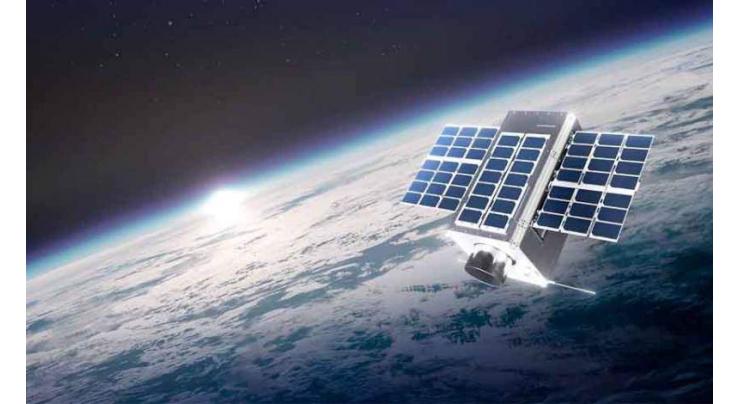
PAKSAT MM-1 To Bridge Digital Divide, Empower Pakistan: Suparco
Faizan Hashmi Published May 30, 2024 | 10:03 PM

Director Pakistan Space and Upper Atmosphere Research Commission (Suparco), Dr Imtnan-Ul-Haque Qazi, on Thursday hailed the launching of Pakistan's second communication satellite, PAKSAT MM-1, as a significant milestone in the country's pursuit of a digitally connected future
ISLAMABAD, (UrduPoint / Pakistan Point News - 30th May, 2024) Director Pakistan Space and Upper Atmosphere Research Commission (Suparco), Dr Imtnan-Ul-Haque Qazi, on Thursday hailed the launching of Pakistan's second communication satellite, PAKSAT MM-1, as a significant milestone in the country's pursuit of a digitally connected future.
"The PAKSAT MM-1 satellite will provide a range of communication services, including broadband internet, tv broadcasting, mobile banking, and VSAT connectivity," Director Suparco told private news channel.
He said the satellite's advanced technology will enable effective internet provision in remote areas such as Gwadar and Gilgit Baltistan, where optical fiber was not available.
This will also contribute to the establishment of a sophisticated communication network, meeting the growing demands of the telecom sector and addressing the increasing demand for high-speed internet and seamless connectivity.
Dr Qazi said that Primary objective of PAKSAT MM-1 was to strengthen Pakistan's communication infrastructure, paving the way for broadening the horizons for connectivity, serving the unserved, and transforming Pakistan into a digital powerhouse.
To a query, he emphasized that successful launching of PAKSAT MM-1, is a testament to country's commitment to harnessing the power of technology to drive economic growth, improve lives, and bridge the digital divide.
It may be mentioned here that Pakistan has launched of its second communication satellite, PAKSAT MM-1, from China's Xichang Satellite Launch Centre on Thursday.
This development comes after the country launched its first satellite as part of China's Chang'e-6 lunar mission from Hainan earlier this month.
Related Topics
Recent Stories

Cricket: England v West Indies 3rd Test scoreboard

Finance minister briefs Chinese officials on reform agenda, engagement with IMF

Finland says Russian vessel violated its territorial waters

Olympic opening ceremony under way on River Seine

West Indies' treble strike rocks England in third Test

Ukraine court orders detention of suspect in murder of nationalist ex-MP

Long queues, ticketing problems ahead of Paris opening ceremony

Rana Sanaullah Khan joins Paris 2024 Olympics inauguration reception

Glowing tributes mark 69th birthday of President Zardari at Governor's House

Players unaware of spying scandal as Canada Olympic coach sent home: official

Naqvi hails Pak women cricketers for going down fighting against SL

'Sabotage' on French rail network before Olympics: What we know
More Stories From Pakistan
-
NDMA Advisory: More Monsoon Rains-wind, Thundershowers from July 28-31
6 hours ago -
Armed Forces, tri services chiefs pay homage to Captain Sarwar Shaheed
6 hours ago -
Agriculture dept inks agreement with Bakhabar Kissan
6 hours ago -

Rana Sanaullah Khan joins Paris 2024 Olympics inauguration reception
6 hours ago -

Glowing tributes mark 69th birthday of President Zardari at Governor's House
6 hours ago -

Balochistan CM announce depoliticizing of police, Levies force
6 hours ago
-

PTI creating unrest, halting economic progress in country: MNA
6 hours ago -

ISSI holds webinar on “Elections in Iran : Regional and International Insights”
6 hours ago -

ECP defers written test for seats of election officers
6 hours ago -

PN assists in firefighting, evacuation efforts for stranded civilians of Kashif Centre fire incident
6 hours ago -

Women's rights protection is govt's top priority. Hina Parvez Butt
6 hours ago -

"We stand in solidarity with Azma Bokhari”: Secretary Women’s Parliamentary Caucus
6 hours ago








